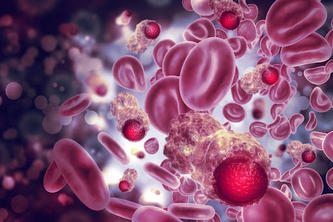
A new study from the University of Minnesota is the first to demonstrate the ability for gene therapy to repair neural connections for those with the rare genetic brain disorder known as Hurler syndrome. The findings suggest the use of gene therapies — an entirely new standard for treatment — for those with brain disorders like Hurler syndrome, which have a devastating impact on those affected.
The study was published in the Nature journal Scientific Reports.
Hurler syndrome, also known as mucopolysaccharidosis type I (MPS I), is a genetic disorder affecting newborns that leads to severe cognitive deficiencies and severe physical abnormalities. Genetic mutations disrupt synthesis of an essential lysosomal enzyme IDUA resulting in progressive brain damage. Death occurs by 10 years of age. Current treatments are inadequate — bone marrow transplants are dangerous and lifetime enzyme replacement fails to prevent progressive brain damage.
U of M researchers evaluated a new form of gene therapy invented at the University of Minnesota — the PS gene-editing system — in mice with Hurler syndrome. This approach created very high, continuous levels of normal enzymes in the liver that can enter the brain via the circulatory system. Using high resolution resting-state functional MRI (rs-fMRI) — a safe, noninvasive and whole-brain activity imaging tool for diagnosis and post-treatment evaluation — investigators first identified neural networks that were disrupted. Next, they assessed the extent to which brain functions and connectivity were restored following the gene therapy.
The investigators observed the new approach of PS gene-editing produced normal enzymes from the liver that were able to sustain normal connections within specific neural networks. The technology needed for high resolution rs-fMRI brain connectome imaging was developed by Wei Zhu, a graduate student in the University’s Center for Magnetic Resonance Research.
Walter Low, a co-senior author and professor in the U of M Medical School, referred to the study as a breakthrough: “This is the first demonstration of a gene therapy that has corrected a neurological disorder resulting in the restoration of brain connectivity as confirmed by rs-fMRI.”
“A similar rs-fMRI approach as applied in this preclinical study should be translatable to the clinical setting and patients, especially for those with genetic brain disorders, and for examining the efficacy of brain network restoration and function after gene treatment,” said Wei Chen, a co-senior author and professor in the U of M Medical School and Center for Magnetic Resonance Research.
“The aeonic production of normal IDUA in the liver of mice with Hurler syndrome and the ability to traffic enzymes across the blood-brain barrier to correct abnormalities in the brain is a significant achievement,” said Chester Whitley, a co-author and professor in the U of M Medical School.
“This new approach will enable the monitoring of brain connectivity in other lysosomal disorders that affect brain function following gene-editing,” added Perry Hackett, a co-author and professor in the College of Biological Sciences.
Other participants in this study include Lin Zhang, an associate professor in the School of Public Health; Ying Zhang, an informatics analyst in the Minnesota Supercomputing Institute; Xiao-Hong Zhu, a professor in the U of M Medical School and Center for Magnetic Resonance Research; Isaac Clark, a graduate student in the Biomedical Engineering Program; and Li Ou, a former faculty member in the U of M Medical School.
This work was supported in part by funds from National Institutes of Health Grants [R01 NS118330, U01 EB026978, R01 MH111413, R01 NS133006 and P41 EB027061], the Susanne M. Schwarz Fund and the Hackett Royalty Fund.
-30-
About the University of Minnesota Medical School
The University of Minnesota Medical School is at the forefront of learning and discovery, transforming medical care and educating the next generation of physicians. Our graduates and faculty produce high-impact biomedical research and advance the practice of medicine. We acknowledge that the U of M Medical School, both the Twin Cities campus and Duluth campus, is located on traditional, ancestral and contemporary lands of the Dakota and the Ojibwe, and scores of other Indigenous people, and we affirm our commitment to tribal communities and their sovereignty as we seek to improve and strengthen our relations with tribal nations. Learn more at med.umn.edu.
About the College of Biological Sciences
The College of Biological Sciences at the University of Minnesota is one of two colleges in the United States dedicated to the biological sciences with undergraduate majors and graduate programs that cover the spectrum of life from molecules to ecosystems. Learn more at cbs.umn.edu.
About the School of Public Health
The University of Minnesota School of Public Health improves the health and wellbeing of populations and communities around the world by bringing innovative research, learning, and concrete actions to today’s biggest health challenges. We prepare some of the most influential leaders in the field, and partner with health departments, communities, and policymakers to advance health equity for all. Learn more at sph.umn.edu.
About the College of Science and Engineering
The University of Minnesota College of Science and Engineering brings together the University’s programs in engineering, physical sciences, mathematics and computer science into one college. The college is ranked among the top academic programs in the country and includes 12 academic departments offering a wide range of degree programs at the baccalaureate, master's, and doctoral levels. Learn more at cse.umn.edu.
- Categories:
- Health
- Health conditions
- Medical




